Best Time to Visit Siem Reap
June 5, 2023
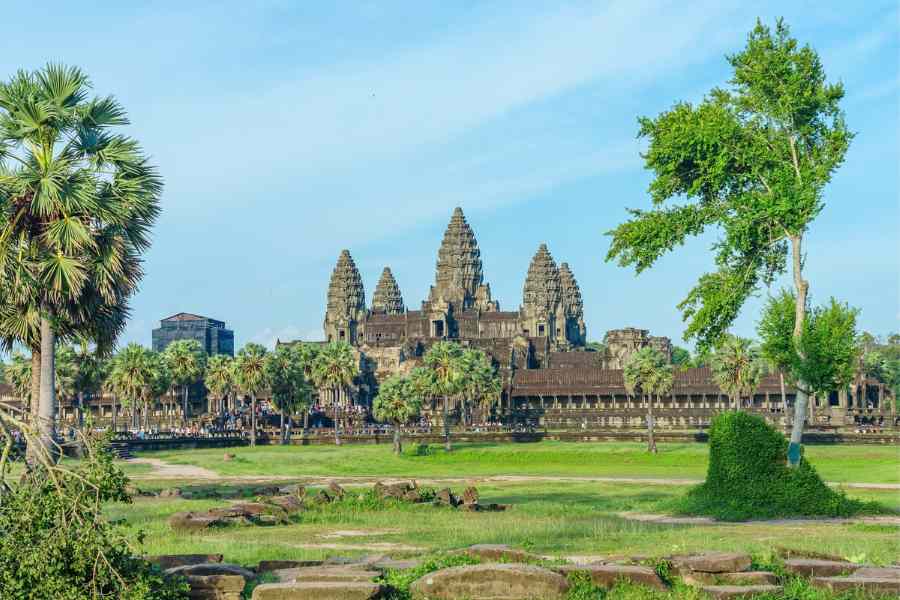
Table of Contents
Best Time to Visit Siem Reap
Best Time to Visit Siem Reap
The best season to see the city of Siem Reap and the temples of Angkor Wat is during the winter, which lasts from November to February. Due to the pleasant and dry weather, it is prime tourist season. Tourists flock to the city, so be prepared for long queues and high accommodation prices.
March to May temperatures start rising, with a chance of showers. Fewer people, but still decent for visitors. June-October is the low season; heavy rain is expected. It can be enjoyable with fewer tourists, but bring an umbrella in case of sudden downpours.
Pre-booking is recommended for peak seasons in Siem Reap weeks in advance. Be prepared with sunscreen (SPF 30+), comfortable clothes and shoes. Pack an umbrella, sunscreen, and winter coat – Siem Reap’s weather can be unpredictable!
Weather Conditions in Siem Reap
To plan a visit to Siem Reap and Angkor Wat, you need to consider the weather conditions. With the ‘Weather Conditions in Siem Reap’ section of this article with ‘Dry Season – Best Time to Visit Siem Reap’ and ‘Wet Season – Not the Best Time to Visit Siem Reap’ as solutions, you can pick the right time to visit.
Key Takeways
| Takeaways | Details |
|---|---|
| Best time to visit Siem Reap | The best time to visit Siem Reap is during the dry season, from November to February. The weather is pleasant and dry, making it an ideal time for outdoor activities and exploration. |
| Crowds during the best time | Despite being the best time to visit, these months also attract the most tourists, resulting in longer queues and higher accommodation prices. It’s recommended to pre-book accommodations during this peak season. |
| Weather unpredictability | Siem Reap’s weather can be unpredictable. Therefore, it’s essential to be prepared with items like sunscreen (SPF 30+), comfortable clothes and shoes, an umbrella, and a winter coat. |
| Rainy Season | The rainy season occurs from June to October. This period sees fewer tourists, but there’s a higher risk of heavy rain and floods. Despite these conditions, some visitors might enjoy the lower prices and lesser crowds. |
| Dry Season | The dry season, from November to March, is the best time to visit Siem Reap. The weather is perfect for tourists with sunny days and cooler temperatures. However, the site can be crowded, and the humidity in Siem Reap can be high in April and May. |
| Impact of Tourism | The significant number of visitors during the peak season can have a substantial impact on the ancient ruins and can make navigation difficult. *** |
| Best time to visit Angkor Wat | The best time to visit Angkor Wat is during the peak season from November to March. The weather is dry and sunny, and the temple complex can be appreciated without the large crowds. |
| Off-peak season at Angkor Wat | The off-peak season is from May to October. During this period, rain adds to the beauty of the area, creating a tranquil atmosphere and offering photographic opportunities. Despite the risk of heavy rains and muddy trails, fewer crowds and lower prices might make it worthwhile for some visitors. |
| Best months to visit Siem Reap and Angkor Wat | The best months to visit Siem Reap and Angkor Wat are from November to March. During this time, the weather is cooler, and there’s less humidity. Good deals on flights, hotels, and attractions are also available during this time. |
| Months to avoid visiting Siem Reap and Angkor Wat | It’s advisable to avoid visiting Siem Reap and Angkor Wat from April to October, as the climate during these months may be unfavorable for tourists, with high humidity, heavy rain, and poor visibility. However, these months do offer clear skies, fewer tourists, and low hotel prices. |
| Factors to consider before planning the trip | Before planning your trip, it’s essential to consider factors like budget, crowd size, and availability of flights and accommodation. The budget can affect the type of accommodation, mode of transport, and activities during the trip. The crowd size can determine the level of comfort during the journey, and availability of flights and accommodation can dictate the ease of planning and execution of the trip. Additionally, weather conditions are a critical factor in determining the best time to visit. |
*** High season, having a tour guide is more important than ever. All our guided tour assure for you an excellent experience with plenty of time to dedicate to learning and discovering the temples
Now lets dive into the details!
Dry Season – Best Time to Visit Siem Reap
Siem Reap’s Arid Conditions: Perfect for Tourists!
Travelers visit Siem Reap during the dry season, between November and March. Sunny days and cooler temperatures make it an ideal time to explore the Angkor temples. Roads are less slippery, and floods are rare.
But crowds can be overwhelming during peak season. Millions of visitors each year have a big impact on the ancient ruins and can make navigation difficult.
It is important to note that even though it is “dry,” humidity in Siem Reap can be high in April and May.
Did You Know This?
June to October is the rainy season in Siem Reap. Flash floods can occur, and many regional waterways, like Tonle Sap Lake, are closed.
The rainy season in Siem Reap is like being a fish in water! Be prepared.
Wet Season – Not the Best Time to Visit Siem Reap
Siem Reap’s rainy season is the off-season for tourists. Monsoons occur from May to October; thus, it’s not great for outdoor activities, tourism and exploration. The heavy rain causes floods and muddy roads, disrupting transport systems.
Travel during this time could ruin your vacation as rain causes problems like dangerous roads, delayed/canceled flights, and closed scenic spots.
But, it also has its perks: fewer people visit these places at this time of year, and you can enjoy lower prices on accommodation.
During the Vietnam War, Cambodia suffered deforestation due to extensive bombing campaigns. Climate change has worsened environmental issues, including weather around Siem Reap.
Plan a trip to Angkor Wat? The time it right, and you won’t have to battle the heat!
Best Time to Visit Angkor Wat
To plan your trip to Angkor Wat, you need to choose the right time to visit. Peak season is the best time to visit Angkor Wat, while low season is not the best time to visit Angkor Wat. Check out the sub-sections below for more information.
Peak Season – Best Time to Visit Angkor Wat
For travelers, it’s essential to know when to explore Angkor Wat. The best time is peak season – November to March – when the weather is dry and sunny. This means visitors can appreciate the grandeur of the temple complex without crowds.
Moving on, there’s also the off-peak season – May to October. Rain will add to the beauty of the area, creating a tranquil atmosphere and photographic chances. Think about your budget and likes to decide when to go.
If you choose peak season, plan ahead to avoid crowds. Get tickets early and start tours before tourists arrive. Also, arrange transportation in advance for trips between sites. This will make sure you have an unforgettable experience at one of Southeast Asia’s greatest sights.
Unless you want to be Indiana Jones, avoid low season.
Low Season – Not the Best Time to Visit Angkor Wat
Planning a trip to Angkor Wat? Consider low season! Fewer crowds and lower prices may be worth the risk of heavy rains and muddy trails.
Plus, August-October brings the rainy season in Cambodia. So, come prepared for rain and flooding!
Angkor Wat was built by King Suryavarman II, a Hindu temple dedicated to Vishnu. Then, it was converted to a Buddhist temple complex under Jayavarman VII. Today, it’s one of the most iconic sites in Southeast Asia.
Don’t stress about the best time to visit – just bring an umbrella and a snorkel!
Best Month to Visit Siem Reap and Angkor Wat
To plan the perfect trip to Siem Reap and Angkor Wat, you want to make sure you visit during the best month possible. You don’t want to waste your time and money visiting during bad weather or closed attractions. The two sub-sections we will cover in this section are the best months to visit Siem Reap and Angkor Wat from November to March and the months to avoid from April to October.
November to March – Best Months to Visit Siem Reap and Angkor Wat
November to March is the peak season for tourists to visit Siem Reap and Angkor Wat. Cooler temps and less humidity make it ideal for exploration. Also, better value deals on flights, hotels, and attractions are available during this time. Book ahead to beat the crowds for New Year’s and Christmas!
To get the most out of your peak season visit, try morning temple tours with lunch breaks during the busiest times. Or, go to less crowded spots. Don’t miss out on local festivals like Water Festival (Bon Om Tuk) in November.
For an unforgettable experience, take a hot air balloon ride over Angkor Wat at sunrise. Or, enjoy Siem Reap’s vibrant food scene with street food tours or cooking classes. Plan ahead and embrace Cambodia’s rich history and culture for a memorable trip to Siem Reap and Angkor Wat during November through March.
April to October – Not the Best Months to Visit Siem Reap and Angkor Wat
April to October brings an unfavorable climate to Siem Reap and Angkor Wat for those seeking the perfect tourist experience. High humidity, lots of rain, and poor visibility may ruin the trip. Other months offer superb weather – moderate temperatures and lots of sunshine.
The sky is bright and clear, providing a great view of the temples. Plus, with fewer travelers and low hotel prices, you can save money.
Be warned – visiting in unfavorable months may put a damper on your sightseeing plans. Plan your trip carefully to make sure you don’t miss the stunning views of the temples in their prime beauty. Book now before it’s too late! Ready for the temple run or just a leisurely stroll? It all starts with planning.
Factors to Consider Before Planning the Trip
To plan your trip to Siem Reap and Angkor Wat with ease, you need to consider a few factors beforehand. Budget, crowd, and availability of flights and accommodation are some of the major factors you need to weigh in before deciding the best time to visit. In this section, we will explore these factors and help you find the perfect time to visit the historical temples.
Budget
Before setting off on a journey, one must consider the financial aspect. This can affect the type of accommodation, mode of transport, and activities during the trip. To prevent overspending, a smart budget should be allocated. Doing research will help in avoiding last-minute expenses. Reading reviews and comparing deals can help in finding an affordable option. Traveling to cheaper destinations, camping, or road trips are some of the cost-friendly alternatives to luxury resorts.
Additionally, the price of the trip alters depending on the season. Selecting a non-peak period can limit out-of-pocket costs without affecting the quality and attractions of the schedule. According to TripAdvisor, the average cost of a week-long vacation for two in Europe is around $2000. Planning during peak season can be expensive.
Crowd
People density matters when you’re planning a journey. Weather and peak tourism times can affect how crowded tourist hotspots are. To avoid long waits, queues, and lack of availability, go to less crowded places.
Traveling during off-peak seasons can save you cash and reduce crowd density. Weekdays are usually less busy than weekends, as they’re popular with locals and tourists alike.
Check if the place has enough capacity for peak crowds – in terms of accommodation, parking, restaurants, activities, and sightseeing.
Pro Tip: Chat with locals or visit travel forums to get insider tips about popular destinations. Booking flights and hotels may seem hard, but hey, they can’t be fully booked if they’re already on fire!
Availability of Flights and Accommodation
Planning a trip requires careful consideration of flight and accommodation availability. Here are five key points to consider:
- Check flight schedules and ticket prices in advance.
- Make sure your accommodation has available rooms.
- Look for package deals for extra savings.
- Research budget airlines or rentals.
- Be flexible with dates.
Additionally, you must research transportation options at your destination. This could include renting a car or looking into public transportation.
Skyscanner says booking flights on a Tuesday afternoon is best for lower prices.
Last tip: don’t forget to bring your charger!
Explore Angkor with Bayon Temple and the world-famous Ta Prohm (Tomb Raider) Temple
Conclusion
We’ve examined the perfect times to visit Siem Reap and Angkor Wat. This means travelers can plan out their journey! The climate conditions matter for seeing the best of these two tourist spots.
November to February is ideal for visiting Siem Reap and Angkor Wat. This time of year has pleasant weather, with little rain. This lets visitors explore the temples with ease. Plus, you can watch sunrises or sunsets with stunning colors!
Going off-season has advantages like fewer crowds and lower prices. But it can also bring high humidity and unpredictable weather.
When seeing Angkor Wat, remember to act respectfully. Don’t wear clothes that are too revealing or behave too loudly. This ancient temple is important to Cambodia’s culture and history.
I visited Angkor Wat in December. I did multiple walks to see its grandeur. I was amazed by the details in every corner. It showed the Khmer Empire’s engineering skills that have lasted over time.
Frequently Asked Questions
When is the best time to visit Siem Reap and Angkor Wat?
The best time to visit Siem Reap and Angkor Wat is between November and February, during Cambodia’s dry season. The weather is pleasantly cool and dry, making it comfortable to explore the ancient temples.
What is the weather like during the high season?
The weather during the high season (November-February) is typically dry, with cooler temperatures ranging from 20-30°C. It’s a great time to explore Angkor Wat and other outdoor activities in the region.
Is it possible to visit Siem Reap and Angkor Wat during the rainy season?
It is possible to visit during the rainy season from May to October, but it can be extremely humid and hot. However, the benefit is that fewer tourists are around, and the temples can be more peaceful to explore.
What should I pack for a trip to Siem Reap?
It is advisable to pack light, breathable clothing for the hot and humid climate. Don’t forget comfortable shoes, sunscreen, a hat, and insect repellant. It is also recommended to dress modestly when visiting religious sites such as Angkor Wat.
What are the peak tourist seasons in Siem Reap?
The peak tourist seasons in Siem Reap are during the cooler months of November to February and during major holidays such as Christmas and New Year’s Eve. It’s important to book accommodations and tours ahead of time during these times.
Are there any major festivals or events in Siem Reap and Angkor Wat?
Yes, the most notable event is the Khmer New Year, celebrated in mid-April. The festival is celebrated with water-throwing and other water-related activities throughout the city and in the temples. Other local celebrations include the Boat Racing Festival and the Chinese New Year.
Recent Post
Get 30% Discount Now
Categories
Guided Tours
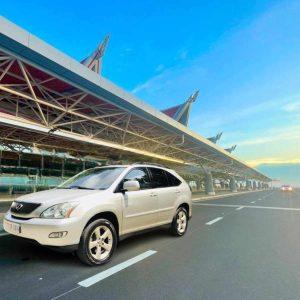
Private Siem Reap Airport SAI Transfers – Siem Reap Airport Pick-up or Drop-off, Just for You!
From: 30$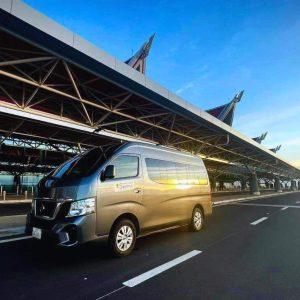
Shared SAI Siem Reap Airport Transfer – We depart every 1 hour!
From: 9$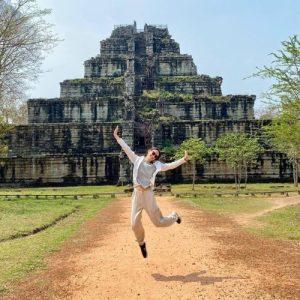
Private Full-Day Siem Reap to Koh Ker & Beng Mealea Temple Tour
From: 75$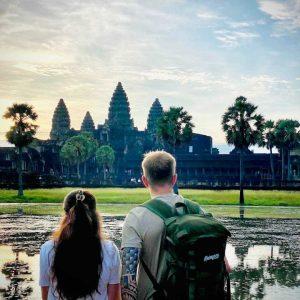
2-Day Angkor Wat Sunrise & Banteay Srei Grand Tour – Small Group Tours
From: 30$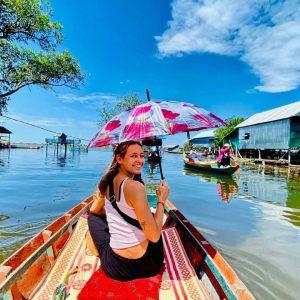
2-Day Angkor Wat Temple Sunset and Floating Village Tour
From: 40$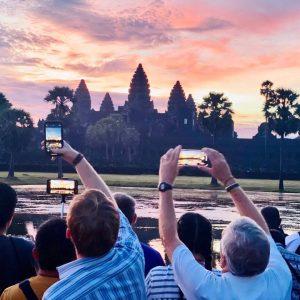
3-Day Angkor Wat Sunrise, Banteay Srei and Floating Villages Tour – Small Group Tours
From: 50$